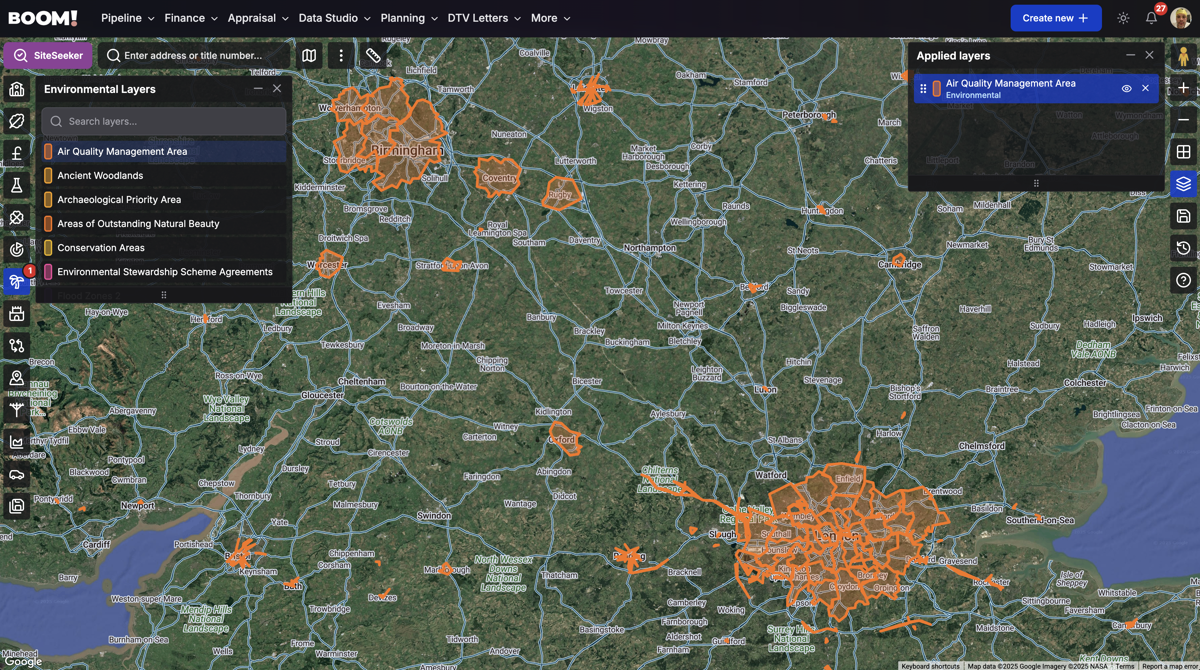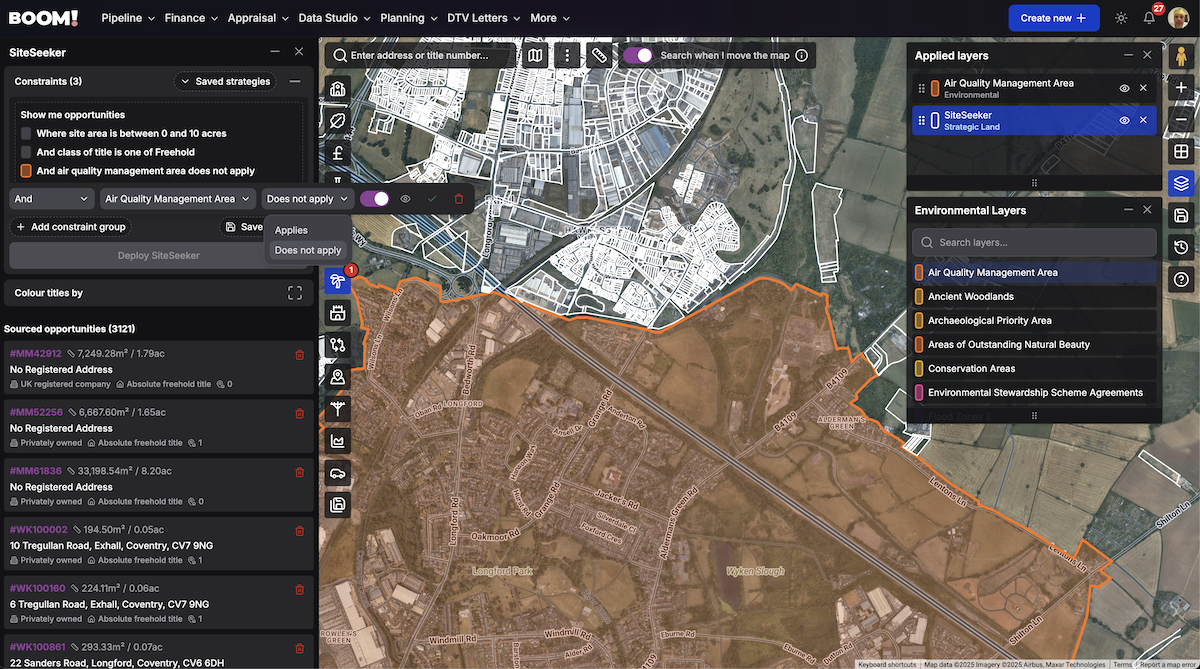What Is an Air Quality Management Area (AQMA)? The Developer’s Guide







Air quality might not be the first thing that comes to mind when you're sourcing a development site, but it now needs to be added to your list of considerations. Target sites sitting within an Air Quality Management Area (AQMA) will face extra planning scrutiny which, if not properly considered, could lead to unexpected costs and delays. Here’s what new developers need to know.
What Is an AQMA (and Why Should You Care)?
An Air Quality Management Area (AQMA) is a zone designated by a local authority where air pollution exceeds national air quality objectives. Typically, this relates to the following pollutants:
Sulphur dioxide;
Nitrogen oxides;
Ammonia;
Fine particulate matter;
Non-methane volatile organic compounds (NMVOCS).
An AQMA can cover one or a combination of pollutants.
Local councils are required by law to monitor air quality. If they find pollution levels consistently too high, they must declare an AQMA and produce an Air Quality Action Plan. These zones are often near main roads, city centres, or industrial areas.
For developers, this means stricter planning controls and often a need for mitigation measures during construction and future use to protect public health.
How AQMAs Affect Planning Permission
If your site lies within (or even close to) an AQMA, your planning application will likely require:
An Air Quality Assessment (AQA);
Evidence that your development won’t worsen existing pollution;
Construction phase and future use mitigation strategies to reduce emissions or exposure.
Local planning authorities may impose conditions such as:
Restrictions on construction phase strategies;
Installing EV charging points;
Using low-emission heating systems;
Designing layouts that reduce vehicle congestion or improve airflow.
Without a solid air quality strategy, your application could be delayed or refused outright.
What Developers Often Overlook (and Why It Costs Them)
Many developers fail to check AQMA status during site sourcing. This leads to:
Last-minute environmental reports;
Planning objections from environmental health teams;
Unplanned design changes or budget overruns.
This is avoidable with basic upfront checks and early engagement with air quality consultants.
Where AQMAs Are Most Common
You’ll usually find AQMAs in:
Busy urban corridors;
Near motorways and A-roads;
Industrial and logistics hubs.
Example: How One Developer Navigated an AQMA Successfully
In 2023, a developer in Birmingham submitted a 20-unit residential scheme inside an AQMA. The initial application lacked a proper air quality assessment and was refused.
After commissioning a detailed AQA and incorporating mechanical ventilation, EV charging, and improved landscaping, they re-applied and gained approval — six months later.
Had they addressed AQMA constraints from the start, the delay (and extra costs) would likely have been avoided.
How to Identify and Manage AQMA Risk in Your Sites
Check early: use BOOM!'s AQMA data layer;
Hire a consultant: if the site is in or near an AQMA, bring in air quality expertise early;
Include mitigation from the outset: don’t wait for planning objections;
Speak to your local planning officer: many councils welcome early engagement.
Conclusion: AQMAs Aren’t a Dealbreaker — If You Plan Ahead
Being in an AQMA doesn’t mean your development is doomed. But it does mean you need to be better prepared than your competition.
Understand the risks, budget for assessments, and address air quality concerns from day one. It’s a straightforward step that can save you months in planning delays.

How BOOM! Makes Navigating AQMAs Effortless
BOOM! makes it easy to identify whether a site sits within an Air Quality Management Area (AQMA) — a key constraint that can impact planning approvals and mitigation requirements. Data Studios AQMA layer clearly highlights designated zones, so you can assess environmental risk early and plan with confidence.
Fully integrated into SiteSeeker, AQMA data can be viewed as raw mapping or applied directly as a sourcing constraint. It’s a faster, smarter way to avoid unexpected delays and focus on sites with fewer environmental hurdles.